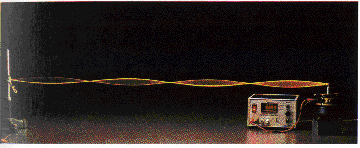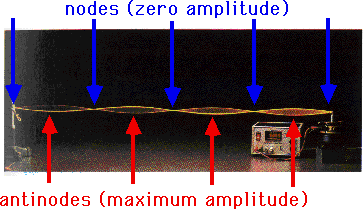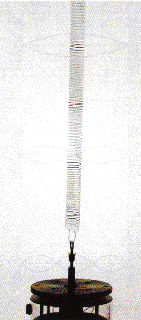

If we wiggle the end of a string at the right frequency, the waves along the string reinforce the waves being reflected and a large-amplitude standing wave is produced.
This is another example of resonance.

For standing waves on a string, the ends are fixed so those are both nodes. To get standing waves, we must fit a whole number of "loops" between those ends. This means

|
Of course, longitudinal waves can also support standing waves. It is easier to think of standing waves in a long, straight tube or pipe. But standing waves are set up in every horn or woodwind instrument when a sound is played. |
 |
|
|
|
|
||
(C) 2003, Doug Davis; all rights reserved